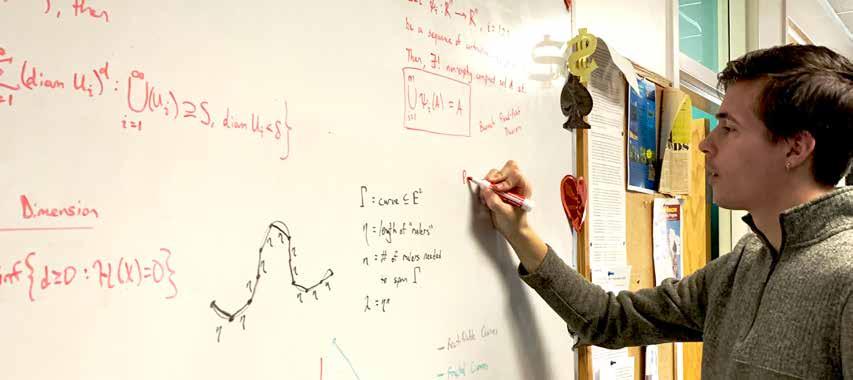
2 minute read
Problem Solved!
June’s Integrals, 1, 2 and 3
By June Richardson
Not many college students have the opportunity to work on a U.S. military base with some of the country’s most intelligent scientists. In the summer of 2022, I was hired as an intern for a government contracting company that sponsors security clearances and sends university students to intern at a particular Naval base. After applying in the fall of 2021, I received my acceptance letter, and spent the next six months anticipating the experience I would be immersed in for an entire ten weeks. I worked through the Dahlgren Naval Base which specializes in ballistic weaponry; this includes the mechanical engineering, the physics, the software engineering, every possible element. During the summer however, I was working with a team of physicists, tasked to work on a longunsolved problem regarding gravitational disturbances in Earth’s field.
In essence, gravity on Earth’s surface is not uniform. Because Earth’s internal density differs, the magnitude (and surprisingly, the direction) of gravity varies from the usual “9.81 meters per second squared, in the downward direction.” Over the span of nearly two decades, the U.S. military used high-tech machines to calculate extremely precise measurements of the gravity vector at many points on Earth’s surface, both on land and sea. The difficulty that these anomalies pose is brought to light when trying to calculate the trajectories of objects that travel over large distances in the Earth’s atmosphere. How can we create a model that calculates the gravitational anomalies from any point in space when only given the two-dimensional surface data?
While working on this problem, I decided to attempt a rather non-traditional method to perform multiple integrations, not a technique you would normally use in a Calculus 3 class. And to my surprise, it worked! This random tinkering with the Generalized Stokes’ Theorem indirectly granted a way to solve this problem that has puzzled physicists for over fifty years. I wrote out the solution, many pages long, and presented it to the team I had been working alongside. It was accepted after a few weeks, and resultantly, the three vectors that calculate the gravity anomalies in each of the three spherical directions were named “June’s Integrals, 1, 2 and 3”. I had the opportunity to present my findings before my ten weeks were over, and it was an incredibly memorable day. Currently, the software engineers are rewriting the programs that calculate the trajectories on free-fall projectiles which will soon be implemented into the update of one of the U.S. Navy’s most advanced weapon systems.
As a result of my completion of this internship, I have my paper “On Gravitational Disturbance” in a controlled Naval research journal, and moreover, paper copies of the document are in some buildings at the base I worked at. More recently, I was granted a number of job opportunities from various government agencies which altered my initial plan to go straight into graduate school. This served a gentle reminder that an individual’s personal goals and career path can change rather quickly! All it takes is an internship to come up with an exciting new idea.








